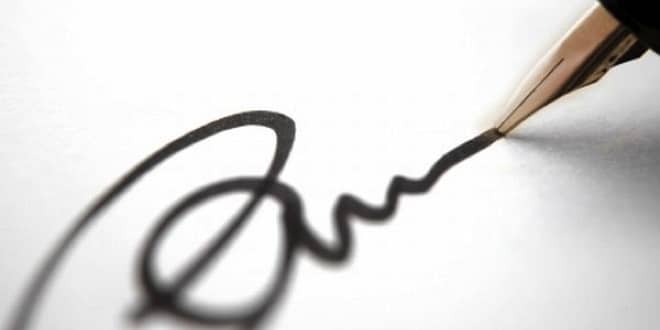Signature Creator For Outlook Mac Os X

Support Communities / Mac OS & System Software / Mac OS X v10.4 Tiger Looks like no one’s replied in a while. To start the conversation again, simply ask a new question. Create a free email signature template with our easy-to-use generator. Works with most email providers, including Gmail, Outlook & Apple Mail.
Mac OS’s Mail app has never made it especially easy to create customised signatures. Its signature editor contains just a very simple text entry field where you can type characters and highlight them as bold, italic or underlined, but there aren’t many more options than that. It’s not easy to make a signature stand out if you use the signature editor within Mail.
This tutorial describes how to create cool HTML-based custom signatures that can include images and more exciting text than is possible in standard signatures. We’ll look at how to use Mail’s templates in another tutorial, which is a slightly different way of achieving similar results. Before we begin you will need: • You should have a HTML editor such as Dreamweaver, Sandvox, etc • You should be familiar with the basics of HTML if you want to create something a little more complex • You need access to a web host or DropBox to store your signature’s images Step 1: Decide What Details To Include This is the easy part – you need to decide what information you want to display on your signature, for example your name and phone number, company address and perhaps a logo.
In this example, we’ll just use the Chris Writes website address and an image copied from the site. Step 2: Edit Your Signature in a HTML Editor The most important step is to create a signature using whatever HTML editor you prefer.
It doesn’t have to be complicated – just text, colours, graphics and such. The signature in this example was created using simply by inserting some custom HTML into a page and exporting it, but you could use any such program or a simple text editor as long as you’re familiar with basic HTML.
The signature I’ve created for this example is shown below. A simple HTML signature with text and an image Any images used in your signature should reside on a web server or a shared DropBox folder that can be publicly accessed, so it’s important that you’ve already uploaded any images to your host and named them suitably. The HTML that you create in the editor should refer to the images stored on your web host. For example, images might be stored at: Once you’re happy with your new signature, save it as a HTML file to use in the next step. For example, call it signature.html. Step 3: Save The Signature as a Web Archive Next, open Safari and drag the newly-created signature into an open window (or right-click the file and select Open With followed by Safari from the list).
Your signature should be displayed in Safari like this: Your signature as viewed in Safari The next step is to save the signature as a web archive: • From Safari’s File menu, select Save As or simply hit Command + S to open the file save dialog window • Make sure that Web Archive is selected in the lower section and name the file something like signature.webarchive. You can name it anything you like because we’ll rename it later anyway This webarchive is what Mail will use in the proceeding steps. Save your signature as a web archive from Safari Step 4: Create a New Blank Signature in Mail Next, you need to create a new temporary signature in Mail so that we can replace the template it creates with our own custom HTML.
• Go to Mail and open Preferences from the Mail menu, or just use Command +, • In the Signatures tab, click Add (the little + button) at the bottom of the middle pane • Give your signature an appropriate name if you wish (e.g.  Yahoo signature, Google signature, etc) • Quit Mail so that next time you reopen it, the new signature is picked up In Mail's preferences, create a new signature and give it a name Step 5: Replace Mail’s Temporary Signature With Your Webarchive The next step is to locate the default signature just created by Mail, and to replace that file with the custom signature you saved earlier as something like signature.webarchive. Follow these steps: • Go to Mail’s Signatures folder which is located in ~/Library/Mail/V2/MailData/Signatures. The simplest way to do this is to open a new Finder window and just use Command + S hift + G and paste the folder path above into the window that appears. Alternatively, hold down Option (i.e.
Yahoo signature, Google signature, etc) • Quit Mail so that next time you reopen it, the new signature is picked up In Mail's preferences, create a new signature and give it a name Step 5: Replace Mail’s Temporary Signature With Your Webarchive The next step is to locate the default signature just created by Mail, and to replace that file with the custom signature you saved earlier as something like signature.webarchive. Follow these steps: • Go to Mail’s Signatures folder which is located in ~/Library/Mail/V2/MailData/Signatures. The simplest way to do this is to open a new Finder window and just use Command + S hift + G and paste the folder path above into the window that appears. Alternatively, hold down Option (i.e.
Alt) and choose the Go menu in Finder, then select Library (keeping the Option key held down) followed by drilling down to the folder described above • In this folder, you should see a new signature file with a rather long filename. In my case the file was called 4420A498-DF79-460C-BE74-BEBA2378A2D0.webarchive. This is the blank signature that you previously created in step 4. Select the file and copy the filename (not the file but the actual filename).